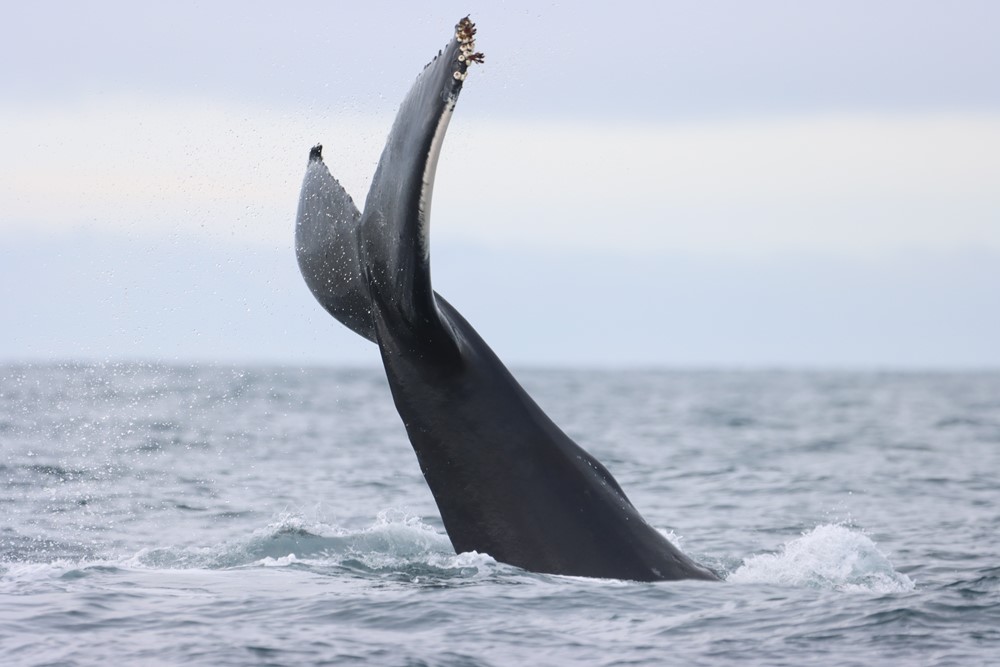THE STRENGTH OF A TAIL

Daily, humpback whales in Skjálfandi Bay display different types of behaviors. In our recent posts, we explained why humpback whales during the night are actively feeding closer to the surface.
In the last days, humpback whales are frequently seen resting or displaying acrobatic behaviour, like “Lobtailing”. This behaviour is described when whales lift its fluke out of the water and force it to slap against the surface.
This behaviour might be interpreted in different contexts and the significance of lobtailing is not yet clearly understood. Though it is probable that humpback whales might raise its tails in a non-communication message to other individuals nearby. The resulting sounds travel underwater and could possibly communicate messages to other whales, for example it could be an attention-getting signal. In fact, several humpback whales have been seen in the bay lately.
Other possible explanation for this behaviour is related to parasite removal as humpback whales might have several parasites and barnacles attached to its skin.
Recently, it has been also suggested that the lobtailing behaviour is associated with surface feeding were creating a frightening disturbance, causing near-surface fish to school more tightly.
When this behavior is observed, the power and strength of the tail is evident, humpback whale fluke can be as wide as 5 meters (18 feet). The tail vertebrae are composed by small V-shaped bones called chevron bones that serve to protect blood vessels and provide attachment sites for ventral flexor muscles in the tail, providing flexibility.
If you witness the lobtailing behavior certainly you will be surprised!
-Diana
